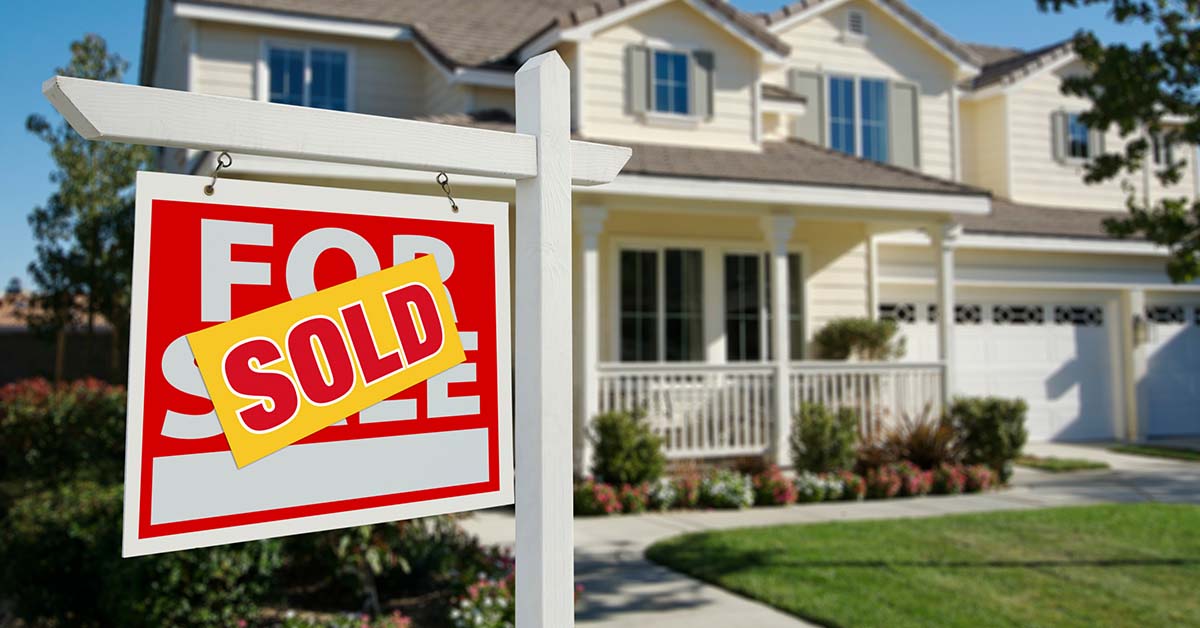What's Heating You? How to Lower Heating Costs
Budgeting for utilities is a must. OK, if you live in a yurt and heat by burning wood (which you source from the forest) and only use the internet when you're in town doing laundry and the library is open, maybe not. But for the rest of us, we need to consider utilities. Depending on where in the country you live, heat, air conditioning, electricity, and even internet access, water, and trash removal are services that may cost us money. If they're part of your living expenses, they should also be considered part of your budget. This mini-series on utility expenses covers ideas and resources to assist you in choosing the source of the needed energy based on your budget, area, and standard needs.
New to this whole utility expense thing?
Suppose you're not just trying to lower utility costs, but starting fresh in building your budget for a new place. In that case, you'll need to work with utility estimates to build your budget. Whether it's a home you bought or a new apartment, you may be asking yourself, "how do I determine average utility expenses?" Ask the seller or your realtor. They should be able to provide at least six months or even a full year of billing history. You can undoubtedly reduce usage, but estimating on the high side and finding out you didn't need the cash is better than not having enough. If you rent an apartment, and utilities aren’t included, ask the landlord for average charges on the rest, or you can use the following rule of thumb for apartment utility costs provided by Zillow. They recommend using 20% of your monthly rent for utilities when you live alone, or 10% if you've got others sharing the rental and utility cost.
Traditional heat systems
And I don't mean "Westward Ho!" Traditional like burning wood and reading by candlelight. Still, traditional sounds boring with so many new and cutting-edge options out there for heat and electricity. But for many of us, it's also the most practical.
Electric heat –It's not just baseboard heating because an electric heat pump is also an option. But if you're considering baseboard heat, consider the pros:
- Heat can be controlled in each room without the need for fancy technology and computers.
- No moving parts or computers involved = less need for repair
- Lower maintenance costs and the ability to use YouTube and your ingenuity to repair things if the need arises.
- They're quiet! And believe me, quiet can mean everything for some people.
- An expected lifespan for baseboard heaters is longer than many traditional furnaces
- Easy to clean with just a vacuum and dusting tool.
There are cons:
- Depending on where you live, cost can be a significant consideration. You may also need to install a heater in every room. I rented a loft-style two-story apartment in an old warehouse in college. It seemed so romantic and funky. Unfortunately there was nothing romantic or funky about that electric bill. It was almost twice my rent each month! I had to move out after the first winter because my budget tanked entirely because my budget tanked entirely due to the cost to stay warm!
- Is there enough room for your heater AND furniture? You need to leave a good 10" space around electric baseboard heaters.
- Placement of windows and doors is also an issue. They can throw off the perceived temp and result in your heater running longer than needed.
Electric heat pumps - heating AND air conditioning
While I won’t go too deeply into air conditioning options in this post, electric heat pumps as a source of heat for your home are worthy of consideration. Energy.gov provides some great information on the various types of heat pumps and indicates that they provide a high-efficiency heating and cooling source. They can result in a 50% reduction in electricity charges over furnaces and baseboard heaters. Heat pumps work by moving heat and cool air from a space they exist to a space that needs that air to remain comfortable. Instead of heating the air, they are transferring air. It's much more energy-efficient. There are multiple types of heat pumps:
- Ducted Air-Source – the most common, but until recently not used in northern climates that experience subfreezing temps. However, technology has advanced, which makes these worth considering.
- Ductless Air-Source – also known as mini-splits, these heat pumps that work without ducts. There are also reverse cycle chillers that work with heated and cooled water rather than air.
- Geothermal – Working with groundwater, which has a more constant temperature, these pumps can be more expensive to install but can reduce energy usage by up to 60%. These aren’t appropriate for all homes due to requirements of soil, landscape, etc. but are worth consideration.
- Absorption – Newer technology and known as a gas-fired heat pump, this type of pump uses heat as its energy source.
Heat pumps offer multi-zone systems and use dampers to allow heating in different rooms at different temperatures.
Some also offer cooling, water heater capabilities and can sometimes be equipped with a gas furnace to offer a hybrid heating system.,
Fuel-based furnaces vs boilers, are they the same?
Fuel-based furnace or boiler– Furnace or boiler, aren't they the same thing? Actually, no. A boiler is a heating unit that heats the water then transfers the water through pipes running throughout your house, warming each space. It may be via radiant pipes located in baseboards in each room or pipes carrying heated water beneath the floor or even in the ceiling. On the other hand, a furnace is pulling in unheated air, heating it, and then pushing it out through vents/ducts in your home. There are pros for each type of heating system:
Pros
Furnace - With a furnace, you can feel the heat. I had a house with a furnace and a boiler (weird, I know). When my mom moved in, she said she wanted the area heated by a furnace so she could FEEL that warm air blowing when the heat went on.
Furnace - With air ducts already installed, adding A/C can be a more straightforward task if you have a furnace.
Boiler - Cheaper maintenance over the long run.
Cons
Furnace - With a furnace, you will get dust, and it's almost impossible to avoid. If you've got allergies, that will be an added issue for you.
Furnace - Humidity is going to be an issue. You'll probably want a furnace that has a built-in humidifier since, in certain seasons, you'll be experiencing incredibly dry air. We just bought a house with a furnace, and the built-in humidifier wasn't working, and I figured we could wait until next year to fix it. But in our house this winter, the humidity hung right around 30% or less unless we used an in-room humidifier. That's right around the humidity of Palm Springs in December!
Boiler - With a boiler, costs to install may be higher, and the installation itself may take a few days rather than a few hours. But if you've got the time and a bit of extra cash, it may be the best choice for you in the long run.
Supplementary or whole house – wood stoves vs. pellet stoves
Does your home have a wood-burning fireplace? It's fun for a weekend getaway property or in a pinch if the power is out. You can heat a space with wood, but that requires wood, and the related seasoning, splitting, cutting, and room to store multiple cords of wood. Plus, unless you've got vents and fans around, there'll only be one room getting the actual heat, the room the fireplace is in! But wood isn't a bad choice. If you're leaning in that direction,
A wood stove can come in handy when the power is out!
That's right. When you're comparing heat sources, think of all the options. Although a wood stove burns wood like a fireplace and may require more maintenance than a pellet stove, it can be cheaper to operate. You may be able to source wood for free (if you’ve got deadfall or an ax) or get a deal on a cord or two of wood (you may need four or five cords for winter depending on where you live, so consider that). Unfortunately, a pellet stove needs pellets; there's no free source of those in the local forest.
Wood as Fuel
Wood used for heating, and the price for that wood can vary depending on where you live. Some wood types are better than others for heating. One plus for wood over pellets is that you can store wood outdoors, covered or not. You can also buy it in advance when it's green for a lower price and allow it to season. Not handy with an ax? You can even purchase it split for you, for a price. That is if you have an outdoor space available to keep your wood. Do you have room for 4 – 6 cords of split wood on your property? And perhaps an additional 4 – 6 seasoning for the upcoming winter? You may need to occasionally fight off a furry occupant of the woodpile or a hornet's nest, but it's reasonably convenient. Keep in mind storing wood indoors can be messy. Then again, with a pellet stove, you're dealing with 40-pound bags of pellets, which must be stored indoors in a dry space. You can always run out to a woodpile and grab a few logs when needed. But lugging a 40-pound bag of pellets from the basement or garage to an upstairs pellet stove may not be an easy task, depending on your weight lifting skills. Comparing the efficiency of pellets vs. wood, you may find the cost is about equal. Still, the convenience factor may favor wood over pellets. It all depends on your abilities and lifestyle, as well as your home. Then again, a pellet stove is more a set it and forget it kind of thing. More on that later.
Does a power outage effect a pellet stove?
Let's get back to that power being out thing. If you live in an area with frequent power outages, don't have a generator, and use a pellet stove to heat your whole house, think again. Pellet stoves need power to run since pellets are moved into the stove via an electrically controlled auger. Yes, you need to keep adding wood to keep your temperature constant with a woodstove. With a pellet stove, you can load it up and use a thermostat to maintain the temperature, only needing to refill the hopper when it's nearing empty. That’s the set it and forget it part. But when the power is out, the thermostat is as well, AND the auger will not move any pellets. And there’ll you’ll sit, with a lovely pellet stove, and no heat.
The other handy aspect of a wood stove during a power outage is that you may also do some cooking on your stove top, depending on the model. Regardless of weather or access to electricity, with a wood stove, you'll have heat and the ability to cook as long as you have fuel to burn. Course, if you’ve got a gas grill, you can also cook on that—just something to consider.
If you're looking to do a bit more research on carbon footprint, BTUs, average costs, etc. visit The Spruce to learn more and see their list of top stoves.
Tax credits and rebates for energy-efficiency
Currently, credits for Residential Renewable Energy Products are available through 12/31/2023. We're still waiting to see if Equipment Tax Credits for Primary Residences will be renewed retroactively via legislation in congress (it expired 12/31/21).
Another way to save is to check your local state credit and rebate opportunities. In MA, you can visit the Mass Save website to learn about rebates and credits on a variety of appliances and home improvements:
- Heating and Cooling
- Weatherization
- Lighting and Appliances
- Building or Renovating a Home
MIT Federal Credit Union offers Mass Save Heat Loans to members who are residents of Massachusetts with flexible terms and 0% APR*! The credit union also offers a fuel assistance loan. This loan is a great way to take advantage of advance purchase deals you can get on kerosene, natural gas, or even wood and pellets to heat your home. Funds can also be used to purchase a wood or pellet stove.
Heat Loans (Mass Save)
Fuel Assistance Loans
In summary, you have a lot of options when it comes to managing your heating costs. If you’re in an apartment and can’t change the TYPE of heat your space offers, there are also ways to manage how much heat you use. The Spruce offers the following tips to reduce your heating bill:
- Ditch the t-shirts in winter – dress in layers, wear slippers, and serve warm drinks
- Flannel is your friend when decorating – Yes, flannel sheets, warm rugs/carpeting, and insulated drapes can help
- Take advantage of that sunny day – Open the curtains when the sun is shining to soak up that warmth.
- Don’t use that vent fan on your stove unless necessary – It sucks out all the warm air.
- Keep your furnace tuned and maintained – meaning change the filters once a month and keep it clean
- Use your ceiling fans – yes even in winter. Make sure you reverse the blade direction to move warm air back down into the room
- Lower the thermostat – And I don’t mean nearer the floor. Drop the setting 1 or two degrees during the day, or when you’re not home, and try lowering it a bit more at night when you’re sleeping. Install a programmable thermostat to assist you in “remembering.”
- Get a free energy audit – See if there are specific areas in your home where heat is escaping and take action to change that.
- Insulate – This may be a challenge in an apartment, but you can always discuss with your landlord. You can also take some simple steps like adding new weatherstripping to windows and doors.
- Make sure heat vents are clear of furniture, curtains, blankets, and anything else that might have piled up in front of them during the year.
Staying warm when it’s cold outside is essential, and making sure you budget for the costs of heating your home is also important. While some utility companies will negotiate rates or offer discounts, it’s better to take care of those things before the winds of winter come whistling down your chimney. If you’re really struggling, reach out for assistance from your state or local energy company. Many times there are funds available to help.
« Return to "Blog"
Tags

Stay Cool! Save Money on Air Conditioning
As we move toward summer, are you starting to wonder whether window A/C units or central air are the way to go? Which will work with your budget?

Affordable Sustainability: Plastic Water Bottle Waste
Use the tips outlined here to change your drinking habits and do one for the environment.

Preparing To Buy Your First Home
Ready to get out of the basement and buy your own place?





